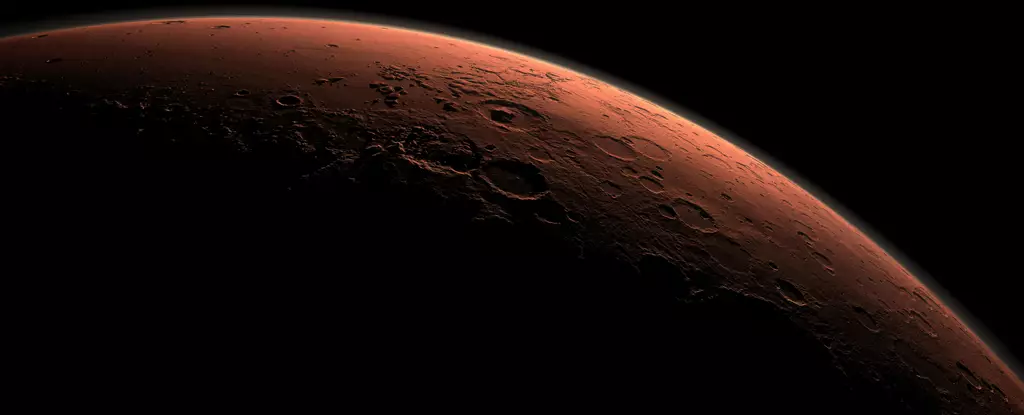A little over ten years ago, a groundbreaking discovery was made on Mars – the presence of organic material in the ancient lakebeds of the red planet. This revelation sparked a wave of excitement in the scientific community as it hinted at the possibility of carbon chemistry being widespread on Mars. While it is important to note that finding organic molecules does not equate to finding signs of alien life, it does pose an interesting puzzle regarding the origins of these molecules. Planetary scientist Yuichiro Ueno and his team from the Tokyo Institute of Technology have proposed a fascinating theory that sheds light on the source of this organic material.
The Role of Atmospheric Processes
According to Ueno’s research, the organic material found on Mars may have originated in the planet’s atmosphere. Carbon dioxide in the Martian atmosphere, when exposed to ultraviolet sunlight, undergoes chemical reactions to form a mist of carbon molecules that eventually rain down onto the planet’s surface. While this may not be as thrilling as the prospect of Martian biology, it provides crucial insights into the formation of complex carbon-based molecules – the building blocks of life. Chemist Matthew Johnson of the University of Copenhagen aptly describes it as the ‘egg’ – a necessary precursor to life. This discovery opens up a new realm of possibilities in understanding how life-sustaining ingredients may have originated on Earth billions of years ago.
The process of photolysis, where molecules are broken apart by light, plays a key role in the organic chemistry observed on Mars. Johnson and his colleagues had proposed this hypothesis back in 2013 based on simulations, and recent findings have provided evidence consistent with their theory. By studying the isotopic composition of carbon in Martian samples, researchers have discovered a distinct carbon-13 enrichment that points to the role of photolysis in forming organic material. The carbon-13 depletion found in carbonate minerals on Mars mirrors the carbon-13 enrichment in Martian meteorites, solidifying the link between atmospheric processes and the formation of organic material.
The revelations about the origins of organic material on Mars have profound implications for our understanding of Earth’s early history. Billions of years ago, Earth, Mars, and Venus shared similar atmospheres, suggesting that the same chemical processes occurring on Mars may have also taken place on our home planet. While Earth’s dynamic and ever-changing surface may have erased some of the ‘smoking gun’ evidence of these processes, the discovery on Mars provides a valuable clue about how life-sustaining molecules may have originated on Earth. Johnson emphasizes the importance of finding similar evidence on Earth to fully validate the theory, but the parallels between Mars and Earth’s atmospheric processes point to a shared history of organic material formation.
The discovery of organic material on Mars and its link to atmospheric processes opens up a new chapter in our quest to understand the origins of life. By unraveling the mysteries of our neighboring planet, we gain valuable insights into the chemical processes that may have kickstarted life on Earth. The search for answers continues, fueled by the curiosity and determination of scientists like Yuichiro Ueno and Matthew Johnson, who are piecing together the puzzle of life’s beginnings.



Leave a Reply